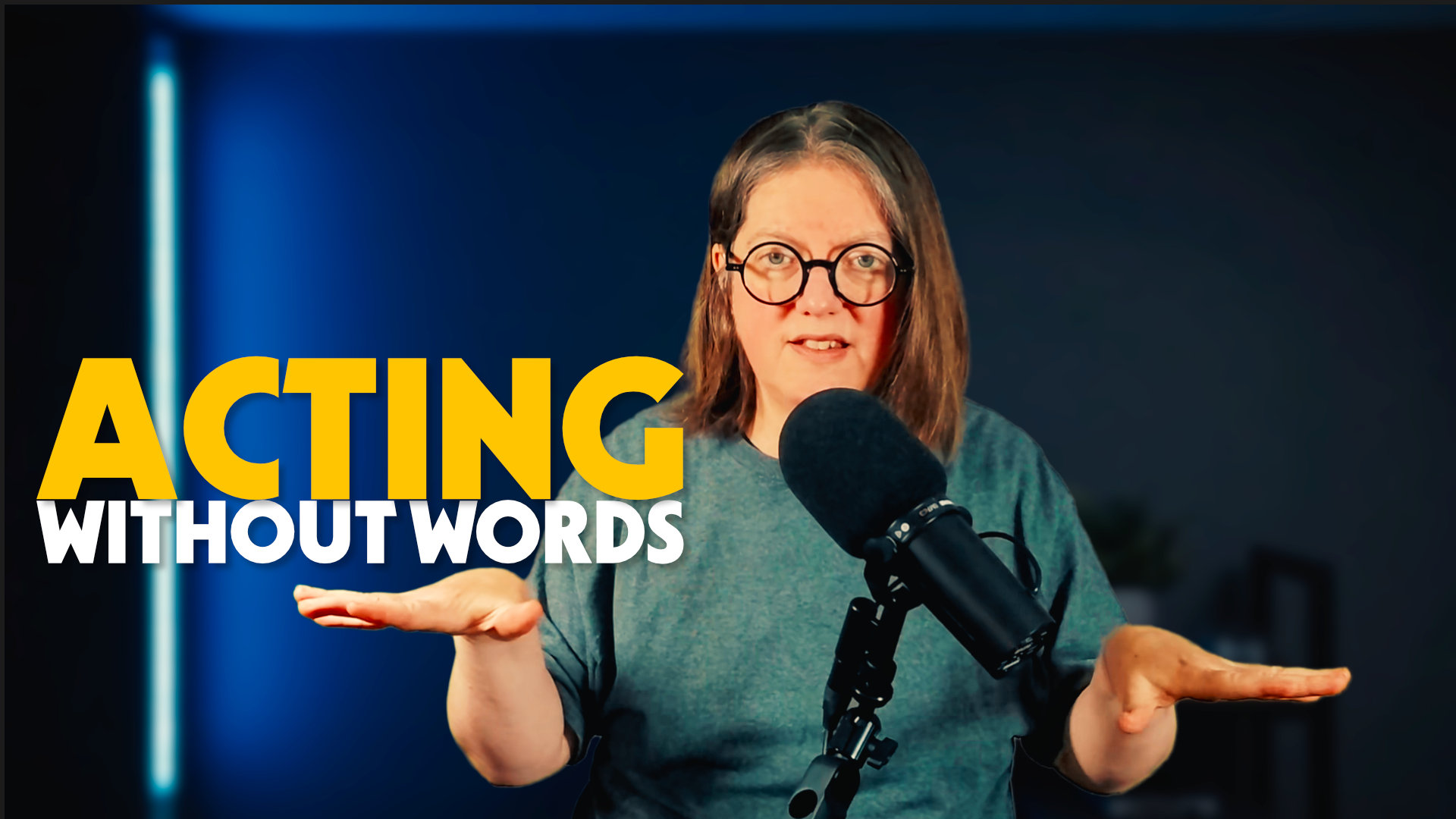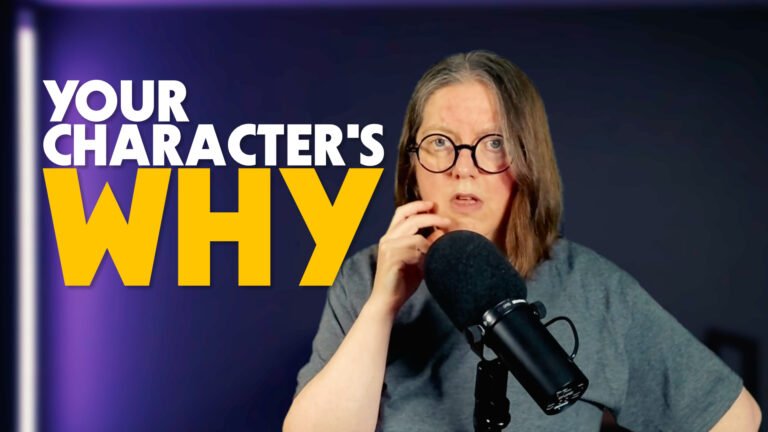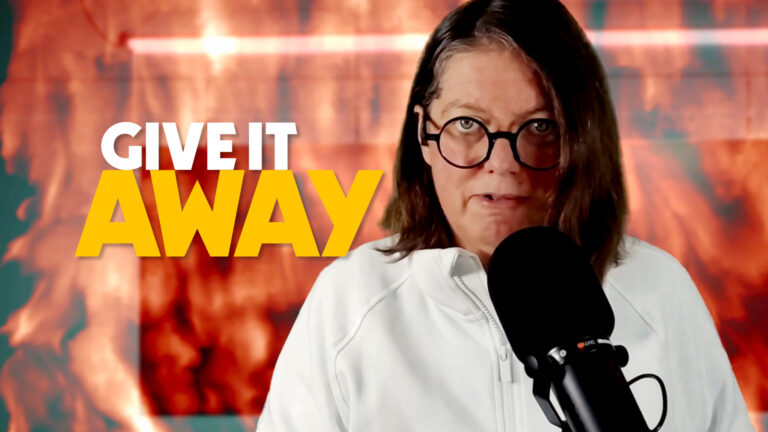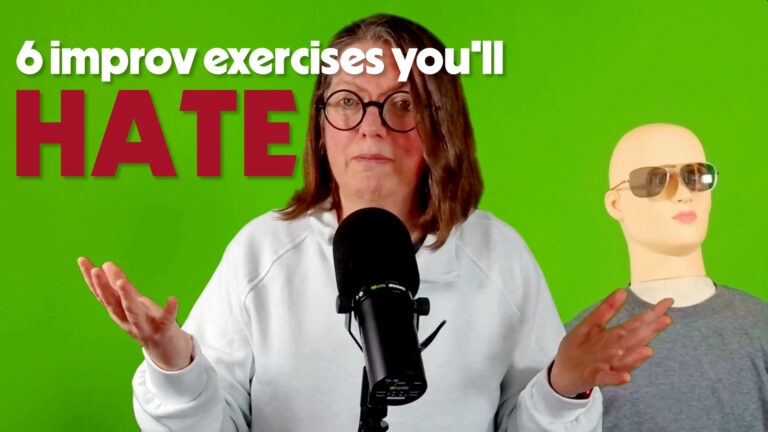
Many of us got into improv because we like words. We love witty banter, sometimes a clever little monologue in the middle of a scene, and the fun of building a story through conversation. But sometimes, that strength can also be a crutch we use in lieu of good acting. It is so easy to rely on dialogue to do a lot of the heavy lifting in a scene. When that ends up happening, our performances can start to feel a little flat. We end up telling the audience everything instead of showing them.
This is why practicing taking the words away helps us become better actors.
When you practice scene work with limited or no dialogue you are forced to slow down. You have to live inside the scene, breathe as your character, and communicate in other ways (that aren’t dialogue). You have to use your physicality, your emotional reactions, and your environment to build the story. This is the very essence of “show, don’t tell.” You create a world through action and reaction… so when you finally do speak, your words have so much more weight and meaning.
In this episode, I share three exercises designed to help you get reps using these skills:
- Strips language down to its basics: you use only letters or numbers as “dialogue” so you have to convey everything through tone and intent, physicality and space work.
- Build the entire reality of a scene in complete silence for the first minute, establishing a world before any words are spoken.
- A challenge where each scene partner can only say (for example) three lines of dialogue for the entire scene duration.
These exercises might feel strange or uncomfortable at first, but they are a solid workout for your acting muscles and will make you a more grounded, compelling, and versatile performer that can get in that skin suit (watch the episode for more about… that).
I also discuss how whether or not these are useful to players who do not process subtext, tone, or physicality at all or quickly. Do they help or work for those of us in that demographic? (spoiler: yes, yes they do)
Listen or Watch
The podcast and the youtube episode contains exercises that help you become a better actor by reducing or eliminating dialogue. They work for those of us who don’t do well with subtext or physical cues, too. Learn more about that in the episode below, and get all the exercise directions. And come ask questions or share your own tips in the Improv Update discord general improv chat channel.
Resources mentioned in this episode:
- Downloadable PDF Exercise Guides: improvupdate.com/downloads
- The Improv Update Discord Community: improvupdate.com/discord
- Free Improv Worksheet & Newsletter: improvupdate.com/newsletter
- Improvised Comedy Podcast, Grack Public Access: stereoforest.com/grack
Available Now!
You can also get exercises to help with challenging scenes (and build up your trust in yourself) in a new booklet I just wrote. This PDF includes additional modifications and a bunch of examples that are not in the video and podcast episode below. You can get it here, and your support will help me with the out-of-pocket expenses and labour to create these resources!
Improv Exercise Booklet
Exercises to Ruin You. This 13 page guide provides six exercises to help practice challenges in improv scenes. Get reps in worst case scenarios! Modifications for solo improv are included for most exercises, and you’ll receive variations and examples not included in the video..





